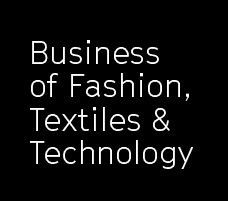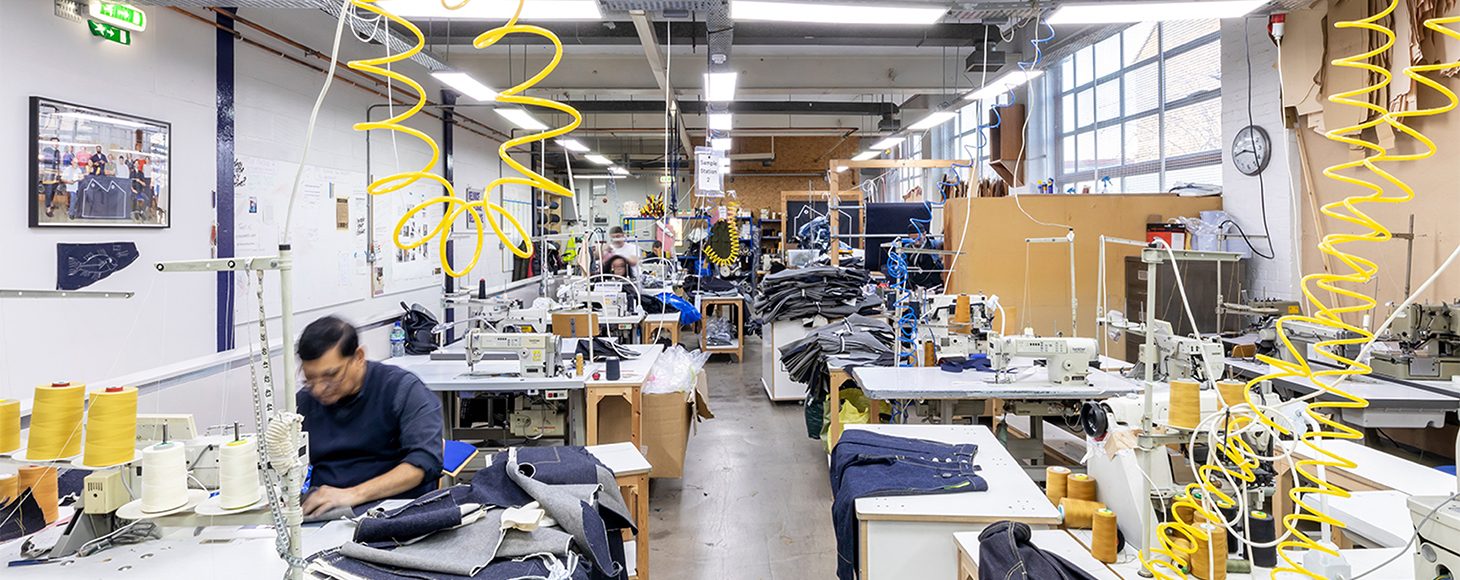SME R&D Programme Round 3 FAQs
This page covers the following sections,
About the Programme
What is BFTT?
BFTT stands for the Business of Fashion, Textiles and Technology Partnership. It is a five-year project, led by University of the Arts London, in partnership with UK universities, research institutions, companies and trade organisations. BFTT is working across seven challenges, including a dedicated programme in support to fashion, textiles and technology small and medium-size enterprises across the UK – the BFTT SME R&D Support Programme.
BFTT is part of the Creative Industries Clusters Programme, funded by the Industrial Strategy Fund and delivered by the Arts and Humanities Research Council, part of UK Research & Innovation (AHRC-UKRI).
What are the BFTT SME R&D Programme’s key aims?
The Programme offers a comprehensive range of coordinated activities that aim to:
- Foster a creative and supportive business research and development culture, which will enable fashion, textile and technology SMEs to thrive using bespoke R&D as a mechanism for innovation and growth.
- Advance the development of sustainable and technologically engaged FTT (fashion, textiles and technology) products, services and experiences.
How does the Programme work?
The programme helps SMEs to:
- Develop viable and strategic R&D propositions throughout the shortlisting process.
- Connect with appropriate industry and academic experts.
- Prototype and test innovations from TRL (Technology Readiness Level) 4 onwards towards taking products and services to market – benefitting from bespoke & expert mentoring through the implementation phase – from 12 to 15 months depending on the complexity of the project.
- Implement industry changing ideas sustainably through additional funding and dedicated project resource.
Eligibility Criteria
Who is eligible to apply?
- SMEs trading and operational in the UK for a minimum of 2 years as a fashion, textiles or related technologies business.
- UK-based SMEs trading for a minimum of 2 years in the FTT sector, applying in partnership with a 2nd industry partner. See below for more information about applying in partnership with another company.
- UK-based SMEs that wish to advance their market position and make a positive impact in the sector through research and development (R&D) of new products, services and/or experiences.
What is an SME?
SME is the acronym for ‘Small and Medium-Size Enterprises’. The most widely used definition in the UK is the one provided by the European Commission (Recommendation 2003/361/EC, 01/01/05) which defines SMEs based on their headcount, turnover and/or balance sheet as follows:
SMEs are small and medium-size businesses that:
- Employ less than 250 people
- Have an annual turnover not exceeding EUR 50 million (c. GBP 43.3 million) and/or
- Have an annual balance sheet total not exceeding EUR 43 million (c. GBP 37.3 million)
Micro businesses (those companies with a turnover under EUR 2 million or c. GBP 1.7 million and less than 10 employees) are also included in this definition. See more information here.
My company would like to apply in partnership with another company? Would a joint application be eligible?
We welcome applications from single SMEs or those proposing a project that requires them to work collaboratively with other industry partners. The types of collaborations that would be eligible are:
- Two complementary SMEs (e.g. a fashion brand and a technology company). In this case, both SMEs could apply for funding to cover some of their project-related costs for a combined maximum of £250,000. One of the SMEs will need to apply as the Lead Applicant. The funding covers a part-time Project Lead, Academic Mentoring and project costs including capital investment, materials, prototyping, labs and maker space, exhibitions, showcases, travel, training and consumables.
- An SME working collaboratively with a larger industry partner (e.g. a textiles design house and a large manufacturing, technology or retail company). In this case, the SME can apply for funding for costs related to the project for up to a maximum of £150,000. The funding covers a part-time Project Lead, Academic Mentoring, access to university labs and equipment, plus eligible project costs including capital investment, materials, prototyping, labs and maker space, exhibitions, showcases, travel, training and consumables.
The programme will not, however, be able to fund the costs of the larger industry partner and their contribution to the project would be considered and recognised as an in-kind match-funding contribution to the project.
What is ‘match-funding’?
All projects are expected to provide some match funding. This could include both cash match funding and match funding in-kind (e.g. another organisation may provide you with access to expertise or specialist equipment free of charge or a free venue for showcasing your products/services, etc).
The minimum thresholds for cash and in-kind match funding vary depending on your company’s turnover (see The Funding Provision below for more details).
What is R&D?
Research and Development (R&D) refers to innovative activities and investment undertaken by corporations or governments with the aim of developing new services, products, or improving existing services, products or processes. R&D allows firms to gain a competitive advantage within the marketplace by performing in a way that their rivals cannot easily replicate, and it often leads to a new type of product, service, some IP generation or patent registration.
Expression of Interest
What is the EOI? Is it the same as an application?
The bidding for the award is a two-stage process. The EOI (Expression of Interest) is an initial form where we are asking you to provide some information about your company and an initial outline of the idea/project you are proposing. It is not yet a formal application. Only shortlisted companies will be invited to fill in a Full Application.
What is the purpose of the EOI form?
The EOI provides the shortlisting panel with some basic information to be able to make an initial assessment of the eligibility and potential of your project/idea before requiring you to submit a full application form.
I am unsure how to answer some of the questions. Are all questions in the EOI mandatory?
Not all questions in the EOI are mandatory, only those marked with an asterisk in the form. As this is only the EOI stage, if you are unsure how to answer them, you can choose to leave them blank or write N/A (not applicable). However, the more information assessors have about your project/idea, the easier it would be to be able to assess its eligibility/potential. So, make sure you answer all the questions that you think are important to describe the potential of your idea/project.
What if the question is not relevant to my business/company?
Some questions might not apply to your business/ company and if so, please just write N/A (not applicable). The call is open to a broad range of companies, from fashion brands to textile manufacturers to technology companies and material specialists, therefore, not all questions are relevant to every sector.
Could I save my answers and return to the form at a later date?
No, the EOI submission form uses Microsoft Forms which does not allow for responses to be returned to at a later date if the submission form is closed. You can access the EOI form questions in this document in order to prepare responses offline so a submission can be done in one attempt. When completing the form, your answers can be accessed in previous sections before submission.
The Funding Provision
What is the value of the Awards?
An SME can apply for an Award with a Maximum Value of £150,000, while joint applications including more than one SME can apply for a combined Maximum Value of £250,000 (see also section 2 above about putting forward a joint application/ applying with a partner).
What is included in the Award?
- Dedicated Project Lead – this will be a new half time post fully funded by the Award, to deliver the project. The new post is jointly managed between the Company and the Academic Partner
- Strategic partnering with Academic Mentoring – Fully funded by the Award, the mentoring from an Academic Partner ensures that the most up to date R&D methodology can be embedded in the Company.
- Access – to University labs, equipment and studio space if required. (providing up to 90% of eligible costs – with the remaining amount provided by the applicant as match funding)
- Funding – up to £50,000 for eligible project costs including capital investment, materials, prototyping, labs and maker space, exhibitions, showcases, travel, training and consumables. (providing up to 90% of eligible costs – with the remaining amount provided by the applicant as match funding)
Notes: Company contribution/ match-funding: a minimum of 10% (10% for businesses with a yearly turnover up to £250,000; 20% for all others)
State Aid
Since 1st January 2021, these Awards are classed as ‘Subsidies’.
Any State Aid De Minimis funding that was issued in the previous two fiscal years must still be declared. However, the aid ceiling is now around £350,000 (325,000 SDR) for any 3 fiscal years. That includes previous State Aid funding awards. So companies can now claim up to the new threshold across 3 fiscal years, but must still declare this and any prior de minimis funding award.
What is De Minimis?
When calculating the amount of subsidy accessed in previous fiscal years, that will include grants regulated under EU provisions. In order to minimise the distortion of competition, the European Union had set limits on how much assistance can be given without its prior approval to organisations operating in a commercial market. De Minimis Aid Regulation (EC Regulation 1407/2013)* states that a ceiling of €200,000 should be observed for any De Minimis Aid provided to any one organisation over a three fiscal year period. From 1st January 2021, in the UK this limit has been superseded by the new limit of c. £350,000 (see above).
* Commission Regulation (EU) No 1407/2013 of 18 December 2013 on the application of Articles 107 and 108 of the Treaty on the Functioning of the European Union to De minimis aid, OJ L 352 24.12.13, p1
The Shortlisting Process
What happens after we submit the EOI?
EOIs will be assessed by an independent panel and scored based on the selection criteria (see below). All shortlisted projects will receive bespoke mentoring support to help them prepare a fuller application including a more detailed project implementation plan, budget and business case.
Shortlisted companies will then have the opportunity to pitch their project plans to a Commissioning Panel that will make recommendations to BFTT’s Programme Management Team for the final selection of the awarded projects.
What selection criteria will be considered to assess the EOIs?
Expressions of interest will be assessed against the following selection criteria:
Relevance: Project and business fit amongst the BFTT SME R&D Support Programme themes.
Innovation: How innovative the proposed project is compared to what’s already available in the marketplace.
Impact: The proposed impact the project will have on driving the FTT sector and beyond to become more sustainable as a whole.
Feasibility: Is the proposed project feasible given timeframes, funding, available expertise and market positioning.
When will we hear if we have been shortlisted?
Shortlisted companies will be notified by 12th April 2021
You can access the Expression of Interest form here.

